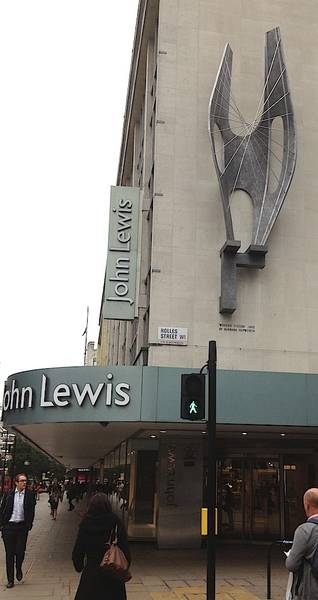“Sculpture to me is primitive, religious, passionate and magical—always affirmative.”
So wrote Barbara Hepworth (1903–75), perhaps the finest female sculptor the world has ever seen. There are certain areas in the arts where women feel naturally at home. Some where they take over and feminize. In fiction and on the radio, for example, it is getting difficult to hear the male voice. But not in sculpture. Hepworth is a lone wolf.

Her life was in some ways typical of a person of her era, temperament and milieu: birth into a respectable family, the unelashing of an uncontrollable artistic spirit, revelatory trips to Italy and Paris, meeting with Picasso, Braque, Brancusi and Moholy-Nagy, the heady politics of 1930s left-wing Hampstead, strong views on the Spanish Civil War, marriages made and marriages broken. And children. Four of them, including a set of triplets. It is no surprise that such a driven, work-obsessed, cerebral woman should have struggled. She was not a militant feminist: the maternal interested her. But still, it must have been abominably tough. Husbands in those days were not much help on the domestic front. Indomitable, ambitious and never mellowing, she ended her life alone and ill, and died in an accidental fire at her home, very probably ignited by her own cigarette.
Hepworth seems to have felt herself to be permanently mantled in the shadow of Henry Moore, her contemporary, friend and for many years a fellow apostle of Abstraction. Moore, however, found his ultimate inspiration in the human figure, which may well explain his wide appeal. Hepworth, once she had abandoned figurative forms in the 1930s, never went back—except once, in her Madonna and Child in St Ives church, a mourning piece for her eldest son, killed in a plane crash at the age of twenty-three.
This month, and until November, the John Lewis department store on Oxford Street, West London, is celebrating the 50th anniversary of the unveiling of Hepworth’s Winged Figure, which is attached to the building’s exterior wall and is passed by hundreds of people every day. “I think one of our universal dreams,” Hepworth said, “is to move in air and water without the resistance of our human legs. I wanted to evoke this sense of freedom. If the Winged Figure in Oxford Street gives people a sense of being airborne I will be very happy.” I am not sure that it really does. It reminds me more of a scoliosis brace or a corset, something redolent of restriction and struggle, filled with the tension between the desired and the achievable. Perhaps that is entirely appropriate.
For more information about the pop-up exhibits at John Lewis, organized in conjunction with the Hepworth Wakefield, see here.
For more about Barbara Hepworth and her art, the visit the Artsy.net Hepworth page.






